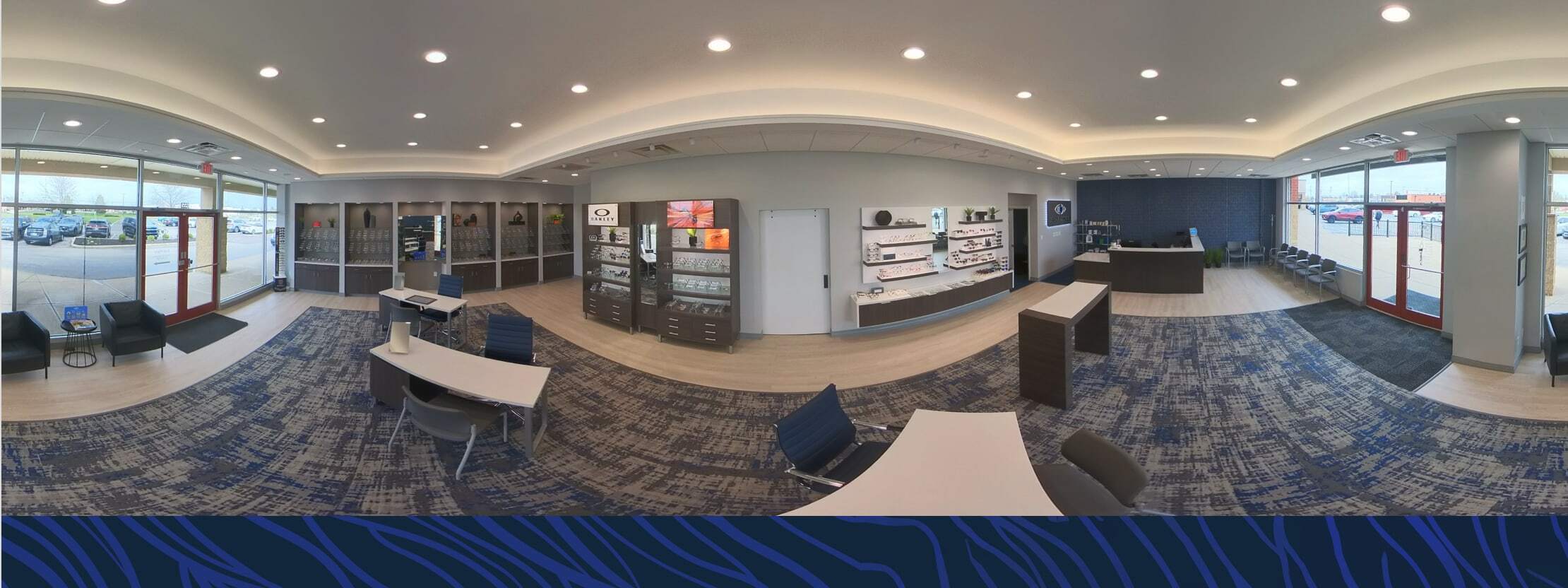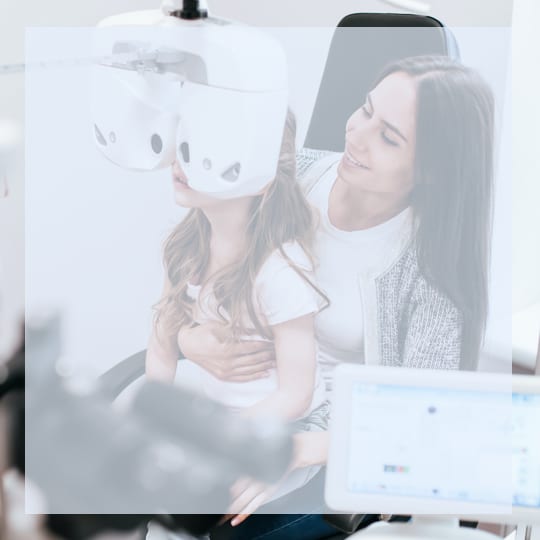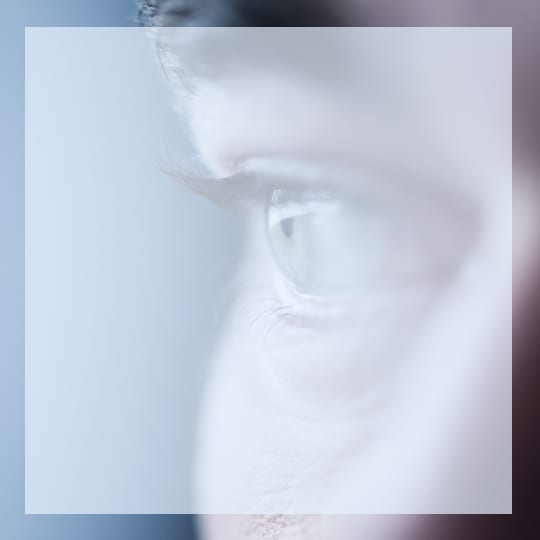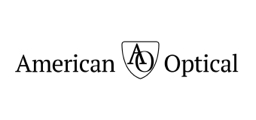

Adult & Senior Eye Exams in Loveland
Book AppointmentYour Best Eye Health Starts With an Exam
Taking care of your ocular health and vision is an ongoing process. However, it’s a process that we’d love to be a part of! At 2020 Eyecare Ohio, we want to help you maintain great overall health through friendly, personalized patient care. We want to get to know you and your eyes, so our comprehensive eye exams are designed to give us all the information necessary to monitor your health and eyesight properly.
How Often Should I Have an Eye Exam?
The American Optometric Association recommends adults between the ages of 18 and 64 visit their optometrist at least every 2 years. For adults over 65, they recommend having an eye exam annually.
However, at 2020 Eyecare Ohio, we recommend visiting us at least once a year. That way, we can make sure everything in your visual system is functioning correctly, and any early signs of eye disease are caught early. Seeing us more frequently also helps us keep track of any treatments you may need and whether they’re working as they should.
One of our eye exams should not take longer than 90 minutes, and we’ll always give you a chance to ask any questions you may have about your ocular health.
Book an appointment in Loveland today for all of your family’s eye care needs.

What Happens During an Eye Exam?
A comprehensive eye exam exists to assess the internal and external functions of your eyes properly. We’ll take a close look at your eyes using various diagnostic tools and equipment. If we notice anything unusual, we can evaluate the situation and recommend the best course of action.
Before we get started with any tests, we’ll always have a short conversation with you to discuss any concerns you may have. You’ll also have this time to ask any questions you may have. If it’s your first time at our practice, we’ll ask you a few questions about:
- Your medical history
- Your general health
- Your family’s medical history
- Any medications you take
- Your corrective eyewear (if you wear them)
Visual Acuity
One of the most recognizable tests involved in a comprehensive eye exam is a visual acuity test. We’ll have you read letters of varying sizes on a chart on the wall, called a Snellen chart. The Snellen chart determines how well you can see at various distances. If you have trouble seeing certain letters, we will use a device called a phoropter to see which lens power is necessary to give you clear vision. We’ll also use a visual field testing machine to assess your peripheral vision.
Your Eyes & Their Movement
To evaluate how well our eyes work together, we’ll perform an ocular motility test. This test assesses your eyes’ movement, indicating whether your eyes are in alignment and your eye muscles are working correctly.
We’ll also examine the external parts of your eye, including the eyelids, cornea, iris, and lens. While we’re evaluating your eyes, we’ll look for any scars, scratches, or early signs of cataracts. Your optometrist will also use a beam of light from a device called a retinoscope to see how well your pupils respond to light.
Internal Functions of Your Eyes
A comprehensive eye exam allows your optometrist to evaluate your eyes’ internal parts, which you cannot see on your own. The only way to pinpoint early signs of disease that develop without visible symptoms is through an eye exam where your doctor assesses the inside of your eye.
During this part of your exam, we may use dilating eye drops to widen your pupil for a better view of the back of your eye, where your retina and optic nerve are. These drops can make your vision blurry, so we’ll let you know if we plan to use them so you can arrange a ride home.
We may also test for glaucoma using a tonometer, a test that measures your eye’s internal pressure. Any diagnostic tests or evaluations we recommend will be based on your age, lifestyle, and current health, alongside any underlying conditions you may have.
If you have any questions about our comprehensive eye exams, we’d love to hear from you! Please contact our office for more information.
Our Location
Find our office in the shopping plaza on the corner of Fields Ertel Road and Montgomery Road. We’re in between the Cricket Wireless and Cosmo Prof, and there is ample free parking available in the plaza.

Our Address
9553 Fields Ertel RdLoveland, OH 45140
Contact Information
- Phone: 513.428.2020
- Email: [email protected]
Hours of Operation
*We’re now open 1 Saturday a month! Please call ahead for availability.
Our Services

Comprehensive eye exams are the first step towards maintaining good ocular health and vision for as long as you can, and we can make that happen.
Learn More
Dry eye disease can make performing everyday activities extremely uncomfortable. At 2020 Eyecare Ohio, we can help you find relief.
Learn More
If you’re tired of dealing with glasses or contacts, LASIK may be a good option to consider, and we’ll be there with you every step of the way.
Learn More
Glaucoma is called the “Silent Thief of Sight” because it can occur without any noticeable symptoms. We’re here to help save your vision.
Learn MoreOur Brands





Our Google Reviews
Our Blog
Can You Wear Eye Makeup With Punctal Plugs?
Dry EyesEye CareCan You Wear Eye Makeup With Punctal Plugs?
Dry EyesEye CarePunctal plugs are a common treatment that can offer relief for dry, irritated eyes. With […]
Punctal plugs are a common treatment that can offer relief for dry, irritated eyes. With […]
Keratoconus Contact Lenses: Tips for First-Time Wearers
Contact LensesKeratoconusKeratoconus Contact Lenses: Tips for First-Time Wearers
Contact LensesKeratoconusLiving with keratoconus can present unique vision challenges. Standard glasses may not fully correct your […]
Living with keratoconus can present unique vision challenges. Standard glasses may not fully correct your […]
What Not to Do Before an Eye Exam?
Eye ExamsWhat Not to Do Before an Eye Exam?
Eye ExamsHave you recently booked an eye exam and aren’t sure how to prepare? Don’t worry. […]
Have you recently booked an eye exam and aren’t sure how to prepare? Don’t worry. […]


